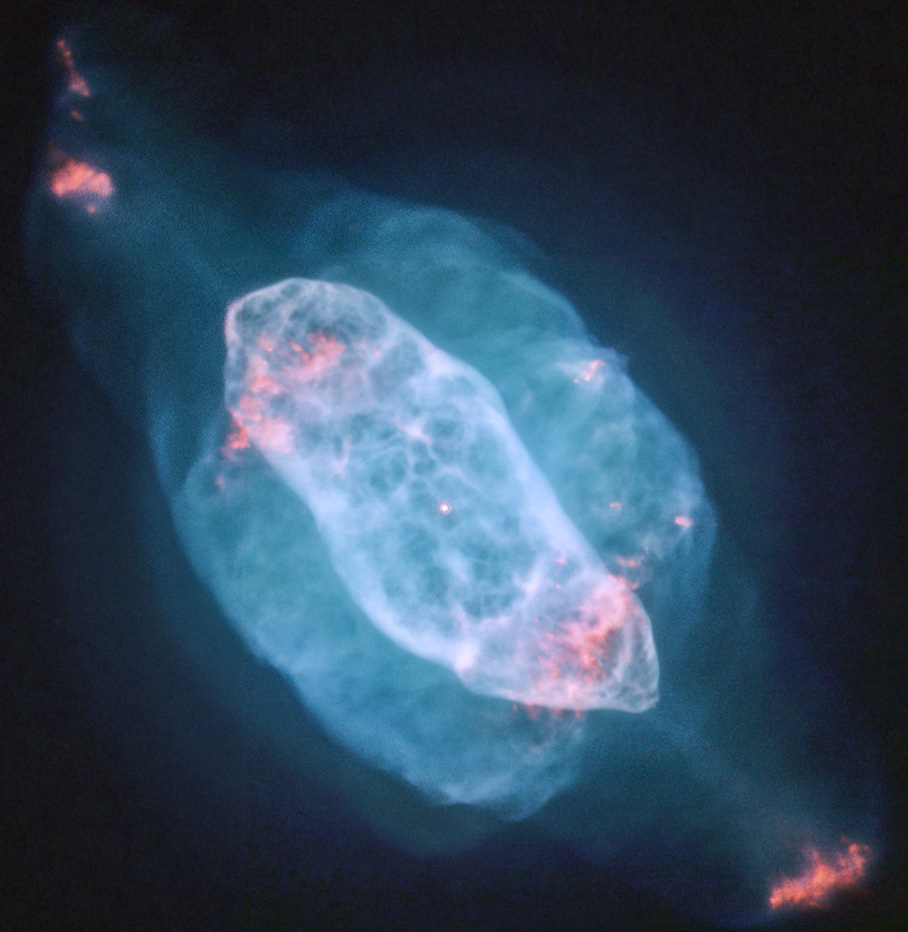
NGC 7009 "Saturn Nebula" (2013)
I was surprised to find concentric shells around this one, much like the Cat’s Eye Nebula that is so famous. They are quite faint and were difficult to process but they should be easy enough to spot.
Processing notes: I combined the PC data with the rest of the WF data to create a partially more detailed image than without the PC data. The bad part of this is that I have a very hard time getting the two to match up no matter what I do and some parts of the PC data are actually less detailed. I sort of understand why but I don’t understand it well enough to explain it better. I mix and matched it in a way I thought was both aesthetic and faithful to the object. Anyway, there are some faint lines visible across the image because of this.
Red: hst_11122_17_wfpc2_f658n_pc_drz + hst_11122_17_wfpc2_f658n_wf_drz + hst_08390_60_wfpc2_f658n_pc_drz
Green: hst_11122_17_wfpc2_f656n_pc_drz + hst_11122_17_wfpc2_f656n_wf_drz
Blue: hst_11122_17_wfpc2_f502n_pc_drz + hst_11122_17_wfpc2_f502n_wf_drz
North is NOT up.
Copyright information:
Hubble data is public domain, but I put a lot of work into combining it into beautiful color images. The minimal credit line should read: NASA / ESA / J. Schmidt

This work is licensed under a Creative Commons Attribution 3.0 Unported License.


